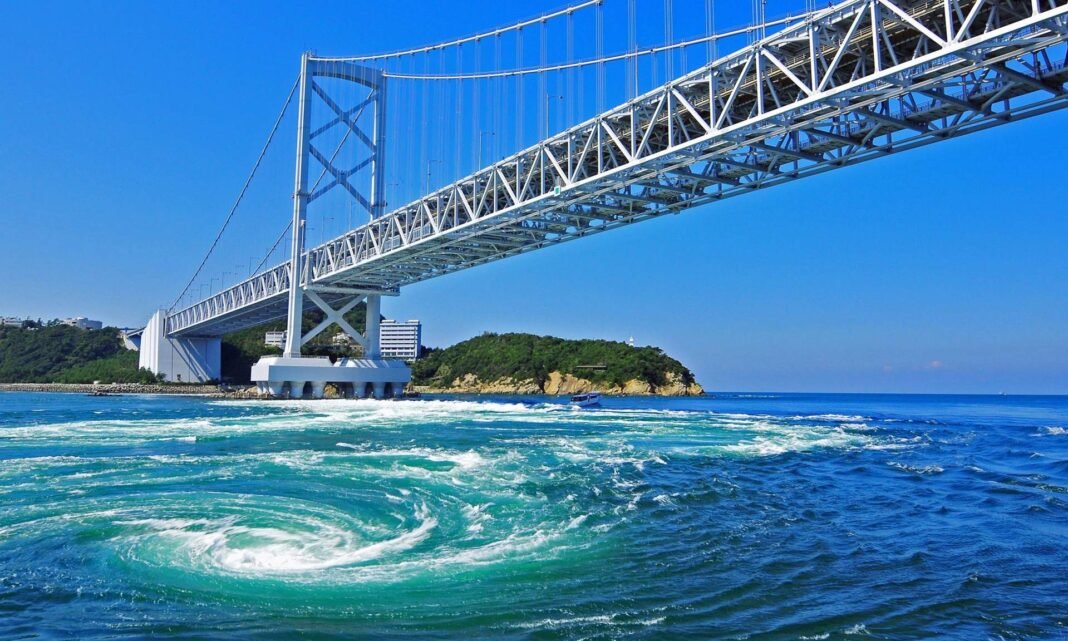Water is a force of nature, capable of both sustaining life and demonstrating its sheer power. Among its many manifestations, the whirlpool is one of the most captivating phenomena. Defined as a swirling body of water produced by opposing currents or a current running into an obstacle, whirlpools can range from gentle eddies to fearsome maelstroms. In this article, we’ll explore the science behind whirlpools, their historical and cultural significance, and their presence in contemporary media, including recent depictions in The New York Times.
The Science of Whirlpools
At its core, a whirlpool is a vortex, a flow pattern of fluid that creates a spiral motion. The fundamental physics of driving whirlpools involves the conservation of angular momentum. When water is displaced or forced to flow around an obstacle, it starts to spin. This spinning motion generates a low-pressure area at the center of the whirlpool, pulling more water into the vortex and intensifying the spiral.
The strength and size of a whirlpool depend on several factors:
- Water Flow Speed: Faster currents create stronger whirlpools. For instance, whirlpools in rivers like the Potomac or the Rhone are more vigorous due to their high flow rates.
- Obstacles: Natural and artificial obstacles, such as rocks or underwater structures, can disrupt smooth water flow, leading to the formation of whirlpools.
- Tides and Waves: In coastal regions, the interaction of tides and waves with the seabed can also produce whirlpools. The famous Saltstraumen Strait in Norway, for example, hosts some of the world’s strongest tidal whirlpools.
Whirlpools are classified based on their strength:
- Eddies: Small whirlpools formed in calm waters or at the edges of larger vortices.
- Meso-Vortices: Larger, more powerful whirlpools found in rivers and large lakes.
- Maelstroms: Extremely powerful whirlpools capable of pulling in large objects, often found in straits and deep channels.
Historical and Cultural Significance
Whirlpools have fascinated humans for centuries, often featuring prominently in myths and legends. Ancient civilizations, from the Greeks to the Norse, have woven stories around these natural phenomena, attributing them to the wrath of gods or the power of mythical creatures.
In Greek mythology, the whirlpool Charybdis was a sea monster that, along with the monster Scylla, posed a great danger to sailors navigating the Strait of Messina. This strait between Sicily and the Italian mainland was notorious for its turbulent waters, which were believed to be caused by Charybdis’ voracious appetite for swallowing and regurgitating the sea.
The Norse sagas also mention whirlpools, particularly in the context of the infamous maelstrom known as the “Giant’s Cauldron” or “SÆMUNDAR-LOKI.” This whirlpool was feared by sailors, believed to be a gateway to the underworld or a place where ships could be easily lost.
In more recent history, whirlpools have been used as metaphors for chaos and destruction. Literature, film, and art frequently depict whirlpools as symbols of uncontrollable forces or as metaphors for emotional turmoil and existential dread.
Whirlpools in Contemporary Media
In modern times, whirlpools continue to capture the imagination, featuring in scientific studies, environmental discussions, and popular media. Recent articles and reports in The New York Times highlight both their scientific significance and their impact on human activities.
Environmental Impact
The New York Times has reported on the role of whirlpools in shaping marine ecosystems. For example, whirlpools can affect the distribution of nutrients in the ocean, influencing the growth of phytoplankton and, consequently, the entire marine food chain. By stirring up the water column, whirlpools can bring nutrients from deeper waters to the surface, supporting the productivity of marine environments.
Additionally, whirlpools can be significant in understanding climate change impacts. Changes in ocean currents and temperatures can alter the frequency and intensity of whirlpools, which in turn affect local weather patterns and marine life. Articles have discussed research efforts to monitor these changes and predict their implications for global climate systems.
Engineering and Safety
Whirlpools also present challenges for engineers and safety experts. In The New York Times, there have been discussions about the risks whirlpools pose to shipping lanes and underwater structures. For instance, the construction of dams, bridges, and underwater pipelines requires careful consideration of whirlpool formation to avoid potential hazards.
Modern technology has provided tools to study and mitigate the effects of whirlpools. Advances in satellite imaging and underwater sensors allow researchers to monitor whirlpools in real-time, providing valuable data for navigation and engineering. These technologies help in designing structures that can withstand the powerful forces exerted by whirlpools and in creating safety protocols for maritime navigation.
Cultural Depictions
In popular culture, whirlpools continue to be featured as dramatic and thrilling elements. Recent films and literature have depicted whirlpools as obstacles or plot devices, often symbolizing the struggle against natural forces or the unknown. For instance, movies may use whirlpools to create suspenseful scenes where characters must navigate treacherous waters or escape from dangerous situations.
Additionally, art and photography often capture the beauty and power of whirlpools, highlighting their aesthetic appeal. Stunning visuals of whirlpools in natural settings, such as those found in the Arctic or tropical regions, demonstrate the breathtaking aspects of these natural phenomena.
Conclusion
Whirlpools are much more than mere curiosities of nature; they are dynamic forces with significant scientific, environmental, and cultural implications. From their role in shaping marine ecosystems and influencing climate patterns to their depiction in mythology and modern media, whirlpools continue to captivate and intrigue. Recent coverage in The New York Times reflects both the ongoing fascination with these phenomena and the growing understanding of their complexities. As we continue to explore and study whirlpools, we gain deeper insights into the powerful forces of nature and their impact on our world.
